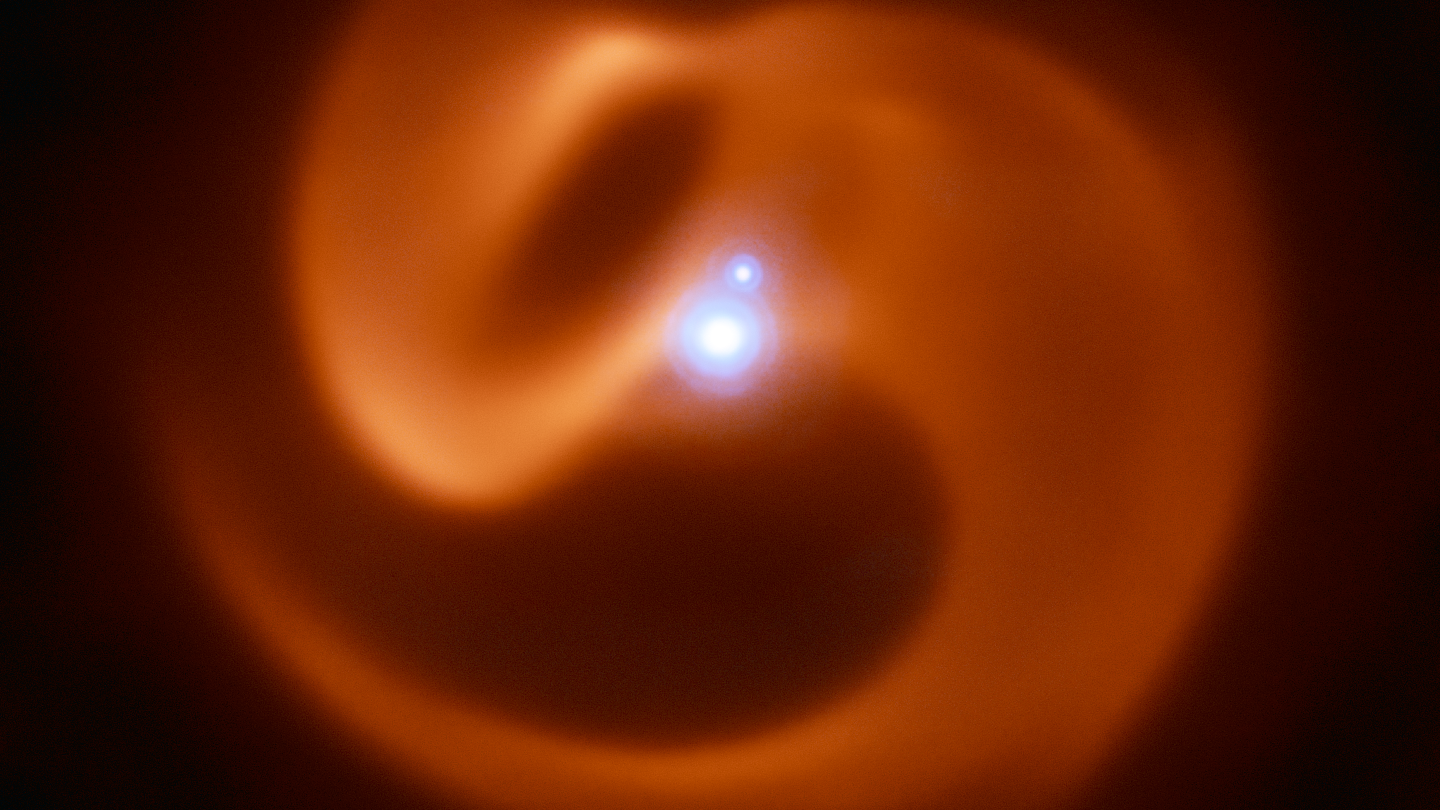Scientists hope James Webb Space Telescope will help solve 'dust budget crisis'
We still can't figure out why there's so much more dust in the universe than what models predict.

There's far too much dust in the universe, compared with what our calculations predict.
This major problem for astronomy, called the "dust budget crisis," needs to be solved to better predict dust's crucial role in sheltering stars, birthing planets and hosting molecules key to life as we know it.
Researchers hope to finally sort out the dust issue using the James Webb Space Telescope, which exits months of commissioning July 12 with the release of its first operational images. Once Webb is ready, among its lineup of early-stage observations will be dust-producing Wolf-Rayet binary stars to better view the origin story of dust.
Live updates: NASA's James Webb Space Telescope mission
Related: How the James Webb Space Telescope works in pictures
Webb will be better positioned than many other observatories in catching sight of this elusive compound. With infrared light, it can peer through clouds of dust, and due to its deep-space orbit, it is far from interfering light sources that can mess up any calculations about dust abundance.
The choice of Webb's target is also key in moving along the dusty mystery. Wolf-Rayet stars, which are unusually hot and bright, may be huge dust producers after interacting with companion stars in binary systems.
Astronomers usually spot these stellar interactions through pinwheel patterns, generated as the two stars orbit each other and the winds blowing off the surfaces of these stars collide in space. However, because Wolf-Rayet stars are so bright, their luminosity overwhelms the fainter emissions of nearby dust.
Breaking space news, the latest updates on rocket launches, skywatching events and more!
Webb's specialized optics, however, will provide unprecedented views in infrared. Moreover, Webb has a higher resolution than NASA's now-retired Spitzer Space Telescope, which also observed from space in infrared.
Long infrared wavelengths of light are not only prized for their ability to peer through dust, but they also can provide the spectrum of elements in dust clouds. Some of these chemicals may be crucial to the building blocks of life, allowing us hints about how dust spread organic molecules through the universe.
"The mid-infrared light that Webb can detect is exactly the wavelength of light we want to look at to study the dust and its chemical composition," study lead Ryan Lau, a fellow at the Japan Aerospace Exploration Agency (JAXA), said in a 2020 statement from the Webb consortium.
Lau's team will examine two Wolf-Rayet binary systems using two instruments on Webb: the Mid-Infrared Instrument (MIRI) and Near Infrared Imager and Slitless Spectrograph (NIRISS).
Coming under scrutiny will be WR 140, a well-studied star system that will serve as a baseline to make sure Webb's observations are working as expected. Also on the list is WR 137, whose two stars will approach each other closely early in Webb's mission in a potential dust-generating event.
Lau's investigation will be one of a set of early release science observations performed by Webb, during the telescope's first five months of normal operations. Beyond serving as an investigation into our dusty origin story, the Wolf-Rayet observations will also help Webb astronomers test out Webb's dynamic range, or the difference between the brightest and faintest objects it can observe.
Learning the range "will be useful to the astronomy community in many ways in the future, for example, in studying the dusty disk surrounding the bright center of an active galaxy, or finding a planet orbiting a bright star," Mansi Kasliwal, an astronomer at the California Institute of Technology on the early release science team, said in the same statement.
Follow Elizabeth Howell on Twitter @howellspace. Follow us on Twitter @Spacedotcom and on Facebook.

Elizabeth Howell (she/her), Ph.D., was a staff writer in the spaceflight channel between 2022 and 2024 specializing in Canadian space news. She was contributing writer for Space.com for 10 years from 2012 to 2024. Elizabeth's reporting includes multiple exclusives with the White House, leading world coverage about a lost-and-found space tomato on the International Space Station, witnessing five human spaceflight launches on two continents, flying parabolic, working inside a spacesuit, and participating in a simulated Mars mission. Her latest book, "Why Am I Taller?" (ECW Press, 2022) is co-written with astronaut Dave Williams.

